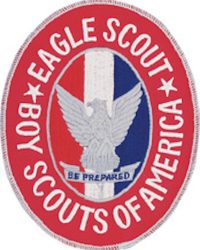Home » Leader & Unit Resources » Advancement & Recognition » Eagle Scout Rank Application and Board of Review Process

Contact the person indicated for District-specific information related to having your Eagle Service Project Proposal approved or the Eagle Board of Review
The Scout informs an adult leader of his or her request.
Like everything in Scouts BSA, this process is youth-led.
The Scout, who is a new member of a Scouts BSA troop, informs one or more of the following adults that he or she is requesting an extension:
Comments, Questions, or Concerns.
Email: advancement@colbsa.org
Please visit colbsa.org/hours for the holiday hours of the resource center and the scout shop.